The Canon Rebel T3i (aka 600D) is the lastest entry-level DSLR from Canon. As a step-up from the budget-oriented Rebel T3, the Rebel T3i offers a little more bang-for-your-buck while still retaining an entry-level price point.
To see if this entry-level shooter is the right one for you, read on.
Canon Rebel T3i Key Features
- 18MP CMOS Sensor
- ISO 100-12800
- 3-inch Vari-angle LCD
- 9-point AF
- 1080p HD Video Capture
- 3x-10x Digital Zoom for Video (retains full 1080p resolution throughout range)
- Built-in Wireless TTL Flash Control
- 18-55mm IS Kit Lens
Canon Rebel T3i Handling and Features

Like previous iterations of the Rebel line, the T3i is built for small hands and has a more plastic feel to it than more advanced DSLRs from Canon that offer magnesium frames. That said, the Rebel T3i still handles fine, and if you must have more body to hold onto, the BG-E8 battery grip works with the T3i to give it more substance.
The biggest change in the T3i’s ergonomics is the inclusion of the vari-angle LCD screen, which flips out the left of the body and tilts up and down for easy viewing from almost any angle. Articulating LCD screens are a mixed bag amongst a lot of photographers. I happen to be a big fan of them, particularly when it comes to DSLRs that shoot video.
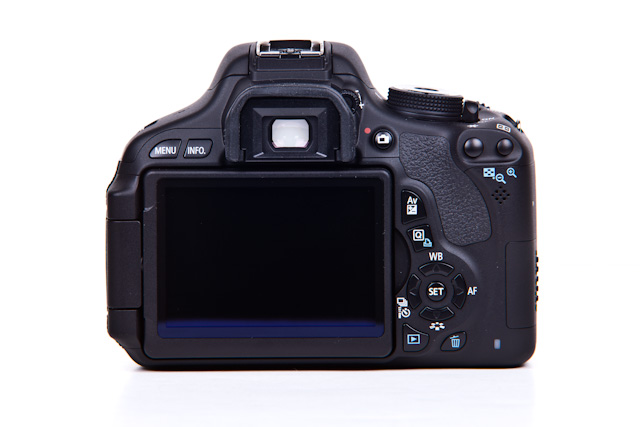
The T3i sports the traditional mode dial atop the camera and offers a number of scene modes as well as your typical PASM modes for more advanced users. In order to use the video recording feature, you must turn the dial all the way to one end and then use the record button on the back to begin recording. Up top, there’s also quick access to the display toggle and ISO settings, which allows you to change ISO values with one hand.
The back of the camera offers reasonable access to most of the camera’s controls. White balance, drive modes, AF settings and picture styles are accessible via the 4-way control button, which also serves as a menu navigator. For controls that are missing direct access on the camera body, you can hit the “Q” button to bring up the quick menu and change just about anything else you might want to.
If you need to dive deeper in the camera’s controls the Menu button rests in the top left, which lets you access more mundane or infrequently changed settings.
Canon has upped the ante with the T3i’s wireless flash capability. If you want to get fancy with TTL flash, then you’ll appreciate the fact that the T3i’s pop-up flash can control two groups of Canon Speedlites at variable power outputs. The T3i also offers the ability to control wireless flash configurations through the 580EX II from the camera’s menu system.
Shooting with the Canon Rebel T3i
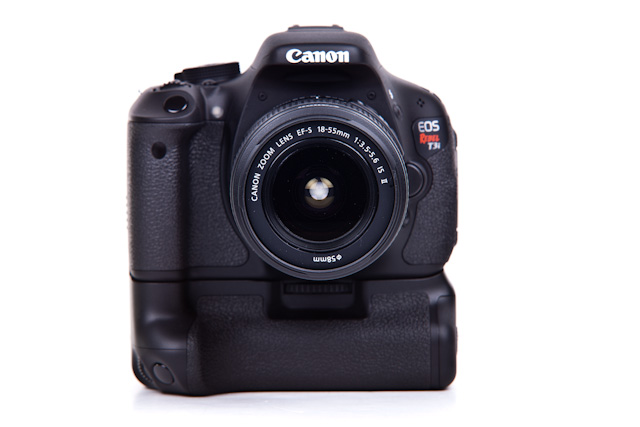
As an entry-level camera, the Rebel T3i is a pleasure to use. Aside from the new articulating LCD though, its just like using any of the recent iterations of the Canon Rebel series. While that’s not a bad thing, those who have used the Rebel T1i and T2i shouldn’t expect any big surprises in the AF response, which is just fine for an entry-level camera.
The one area Canon did change the shooting experience with the T3i though is in the grip. It does not have the same plastic feel that prior Rebel cameras had. Now that Canon has downsized the 60D, the T3i feels much closer to its bigger brother in its general grip and heft. That said, the 60D is still a more substantial camera.
I am one who hasn’t quite bought into live view on DSLRs. I like what Panasonic and Sony are doing on their mirrorless cameras; however, I haven’t found a DSLR that quite does it for me on the live view front. That said, the Rebel T3i opens the door for a little more usability with its live view as a result of the articulating display. I managed to use it a couple of times on outings when I otherwise may not have taken a photo due to the need to climb up on something or lay down on the ground. In these situations, the live view is quite helpful; however, the pitiful autofocus speed while in live view leaves a lot to be desired.
Overall, the Rebel T3i is a breeze to carry around and use to make great photos. The included 18-55mm lens works quite well in most situations – thanks in large part to the built-in Image Stabilization. If you are new to DSLRs, I would suggest thinking about getting a 50mm f/1.8 lens as a companion for your 18-55mm kit lens due to kit lens’ poor indoor/available light performance. If you understand why the 18-55mm’s aperture of f/3.5-5.6 causes this, then you understand how the 50mm f/1.8 lens can help. If you don’t, then you should read this article to understand aperture and lens speed.
Canon Rebel T3i Movie Mode
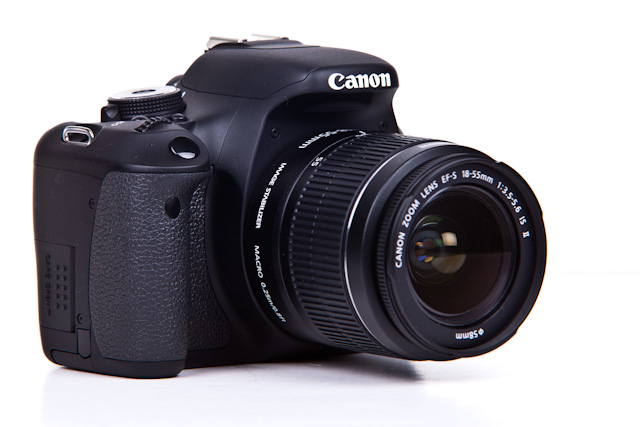
As a video-capable DSLR, the Rebel T3i is probably the most capable and user-friendly camera in its class. It offers a whole lot of options for video resolution and frame rates. You get 1920 x 1080 at 24p, 25p or 30p. Additionally, you can shoot 50p and 60p at 1280 x 720 resolution.
One of the surprise new features in movie mode was the ability to perform a 3x to 10x digital zoom while maintaining HD resolution. Think about that . . . it gives your little 18-55mm lens a maximum effective reach of 550mm. It was surprisingly effective when using it. Of course, it has its limitations, but when you need to zoom in from far away, it gets you there. As a consumer camera, I think this feature fits nicely.
Another feature on the T3i that is eating at 7D owners is manual audio level adjustments. For many casual video users, the T3i’s automatic gain control will suffice for their video needs. However, those who want to do a little more with their videos will appreciate the ability to manually set audio levels.
Here’s a short sample of some clips I shot with the Canon Rebel T3i. I punched the levels up a bit in After Effects with Color Finesse. Also shot with the 18-55mm kit lens.
The biggest downer for me in the Rebel T3i’s video features is the limitation of only having full-stop manual adjustments for ISO settings. As a result, you can’t manually set sensitivity settings of ISO 160, 320 or 640 on the Rebel T3i, which are the cleanest settings for recording video on Canon EOS cameras.
Canon Rebel T3i Image Quality
In short, it’s great. The Rebel T3i matches the T2i’s 18MP sensor size. Most likely, it’s the same sensor inside, which is fine by me. With four cameras now at 18MP, Canon has made good on this sensor and the resulting images. As you can probably figure, you probably aren’t going to notice much (if any) difference in image quality among images captured with the T3i, T2i, 60D and 7D.
I’ve included several sample images shot with the Rebel T3i below. All images were captured in RAW format and processed in Lightroom 3 and/or Photoshop CS5 according to my own personal tastes. I have noted the basic shot info below each image. All images were made with the Rebel T3i?s 18-55mm kit lens.
In addition to real world samples, I’ve provided a number of images of a color chart captured with the Rebel T3i throughout the ISO range. These were RAW files processed in Lightroom with the default adjustments applied.
Feel free to download any of these sample images for your personal inspection (not for republication). You can get the original files by right-clicking on any of the images and choosing “Save link as…”
Canon Rebel T3i Accessories
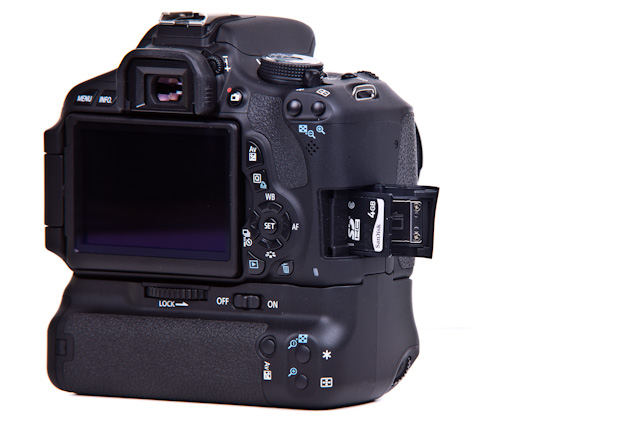
Canon LP-E8 Battery – The Rebel T3i comes with one of these rechargeable lithium-ion batteries; however, if you’re going to be away from power for an extended period, you can pick up spares.
Canon BG-E8 Battery Grip – If you have bigger hands, need extended battery life, or you just like using a vertical shutter release, the Canon BG-E8 is a great accessory to have. It also works on the Rebel T2i if you’re already have it and are upgrading. Since the battery grip uses two batteries, don’t forget to pick up a spare.
Memory Cards – The Canon Rebel T3i uses SD-format cards and can use all current iterations of the format, including SD, SDHC and SDXC. Canon recommends using at least a Class 6 or higher SD card for recording HD video. I would recommend the SanDisk Extreme series SDHC cards. To learn more about different types of SD cards, check out this article on Demystifying SD Cards.
Canon EF 50mm f/1.4 USM – This is my personal favorite lens as a mate for the APS-C format Canon cameras. Due to the crop factor, it has a field of view equivalent to 80mm on the T3i, which makes it an excellent portrait lens. If you are looking for more of a budget-oriented lens for the Rebel T3i, then I recommend picking up the Canon EF 50mm f/1.8 II.
Canon 320EX, 580EX II or 430EX II – If you want to take advantage of the E-TTL off-camera flash system with the T3i, you’ll need at least one of these.
Canon RC-6 Remote – If you want to take photos that you are in and not make the 10-second timer sprint to get in them, then pick up one of these cheap remotes. They work from about 16-feet out and you can set the remote to trigger the T3i 2-seconds later – so when you push the button, you’ve got time to get your hand down.
Conclusions
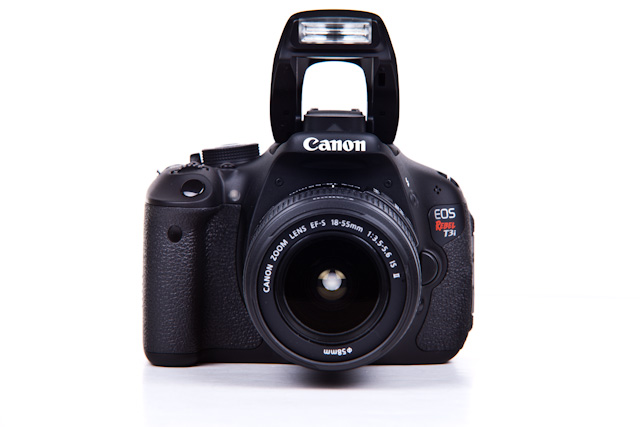
The Rebel T3i continues the tradition of the entry-level line of Canon DSLRs by staying at the top of the pile – although, it is closely surrounded by the likes of the Nikon D5100 and the T3i’s bigger, badder brother, the 60D. For those who are looking for a do-it-all DSLR, the Canon Rebel T3i will serve you well.
The Canon Rebel T3i is available from Photography Bay’s trusted retail partner, B&H Photo, at the following links:
By making your photography purchases at B&H Photo through these links, you are helping Photography Bay to continue to bring quality camera tests, news and reviews. Thanks for your continued support.
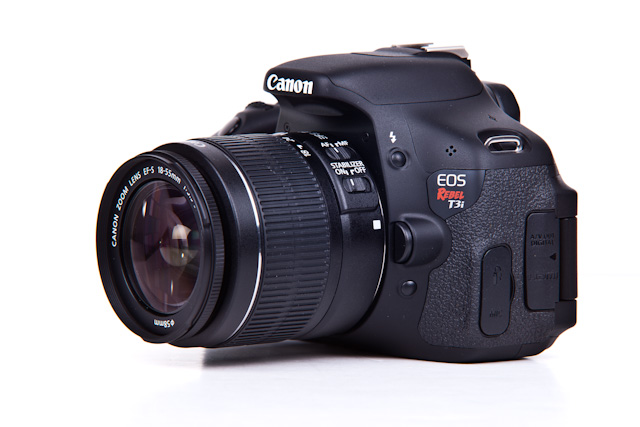




















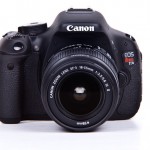
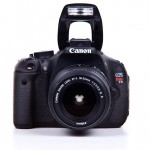
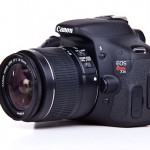
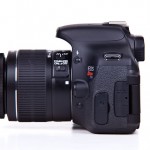
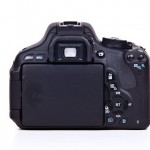
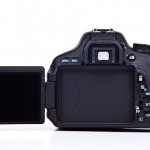
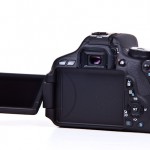
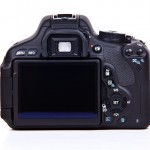
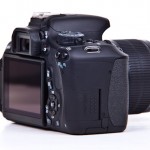
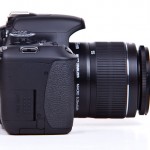
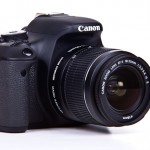
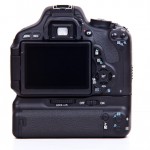
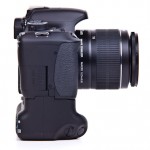
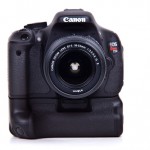
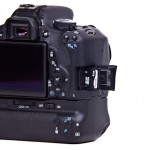


Too bad the example pics doesn’t come in full size when you click on them. Then they’re basically useless for high ISO comparison for example. =(
Sorry about that Andreas. The links should be working now for the full size images.
I’ll 2nd that!
what is the different between 60D and 600D?
what is your preffered?